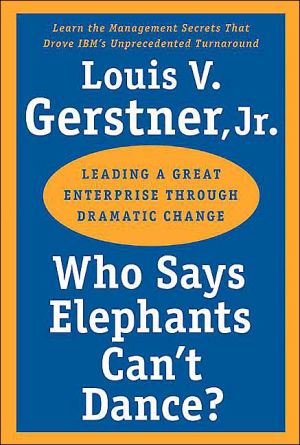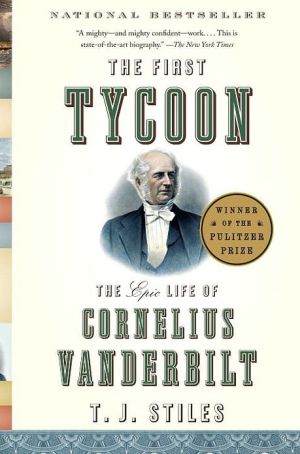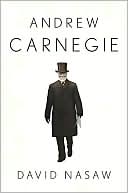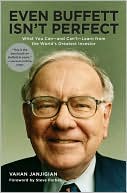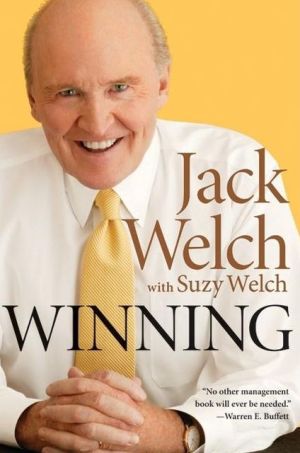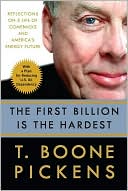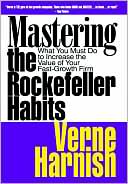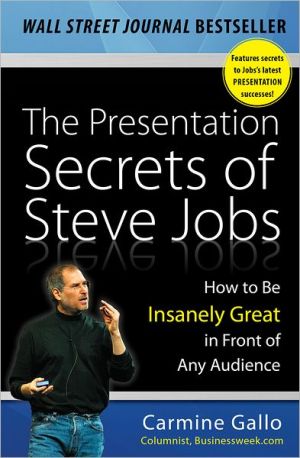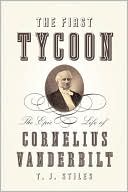Who Says Elephants Can't Dance?: Inside IBM's Historic Turnaround
Who Says Elephants Can't Dance? sums up Lou Gerstner's historic business achievement, bringing IBM back from the brink of insolvency to lead the computer business once again.Offering a unique case study drawn from decades of experience at some of America's top companies — McKinsey, American Express, RJR Nabisco — Gerstner's insights into management and leadership are applicable to any business, at any level. Ranging from strategy to public relations, from finance to organization, Gerstner...
Search in google:
In 1990, IBM had its most profitable year ever. By 1993, the computer industry had changed so rapidly the company was on its way to losing $16 billion and IBM was on a watch list for extinction -- victimized by its own lumbering size, an insular corporate culture, and the PC era IBM had itself helped invent. Then Lou Gerstner was brought in to run IBM. Almost everyone watching the rapid demise of this American icon presumed Gerstner had joined IBM to preside over its continued dissolution into a confederation of autonomous business units. This strategy, well underway when he arrived, would have effectively eliminated the corporation that had invented many of the industry's most important technologies. Instead, Gerstner took hold of the company and demanded the managers work together to re-establish IBM's mission as a customer-focused provider of computing solutions. Moving ahead of his critics, Gerstner made the hold decision to keep the company together, slash prices on his core product to keep the company competitive, and almost defiantly announced, "The last thing IBM needs right now is a vision." Who Says Elephants Can't Dance? tells the story of IBM's competitive and cultural transformation. In his own words, Gerstner offers a blow-by-blow account of his arrival at the company and his campaign to rebuild the leadership team and give the workforce a renewed sense of purpose. In the process, Gerstner defined a strategy for the computing giant and remade the ossified culture bred by the company's own success. The first-hand story of an extraordinary turnaround, a unique case study in managing a crisis, and a thoughtful reflection on the computer industry and the principles of leadership, Who Says Elephants Can't Dance? sums up Lou Gerstner's historic business achievement. Taking readers deep into the world of IBM's CEO, Gerstner recounts the high-level meetings and explains the pressure-filled, no-turning-back decisions that had to be made. He also offers his hard-won conclusions about the essence of what makes a great company run. In the history of modern business, many companies have gone from being industry leaders to the verge of extinction. Through the heroic efforts of a new management team, some of those companies have even succeeded in resuscitating themselves and living on in the shadow of their former stature. But only one company has been at the pinnacle of an industry, fallen to near collapse, and then, beyond anyone's expectations, returned to set the agenda. That company is IBM. Lou Gerstener, Jr., served as chairman and chief executive officer of IBM from April 1993 to March 2002, when he retired as CEO. He remained chairman of the board through the end of 2002. Before joining IBM, Mr. Gerstner served for four years as chairman and CEO of RJR Nabisco, Inc. This was preceded by an eleven-year career at the American Express Company, where he was president of the parent company and chairman and CEO of its largest subsidiary. Prior to that, Mr. Gerstner was a director of the management consulting firm of McKinsey & Co., Inc. He received a bachelor's degree in engineering from Dartmouth College and an MBA from Harvard Business School. The New York Times Book Review The book leaves the reader thinking that a few more Gerstners around in the '90s might have prevented the bubble from swelling so large -- and popping with such a bang.
Who Says Elephants Can't Dance? \ Chapter One\ The Courtship\ On December 14, 1992, I had just returned from one of those always well-intentioned but rarely stimulating charity dinners that are part of a New York City CEO's life, including mine as CEO of RJR Nabisco. I had not been in my Fifth Avenue apartment more than five minutes when my phone rang with a call from the concierge desk downstairs. It was nearly 10 p.m. The concierge said, "Mr. Burke wants to see you as soon as possible this evening."\ Startled at such a request so late at night in a building in which neighbors don't call neighbors, I asked which Mr. Burke, where is he now, and does he really want to see me face to face this evening?\ The answers were: "Jim Burke. He lives upstairs in the building. And, yes, he wants very much to speak to you tonight."\ I didn't know Jim Burke well, but I greatly admired his leadership at Johnson & Johnson, as well as at Partnership for a Drug-Free America. His handling of the Tylenol poisoning crisis years earlier had made him a business legend. I had no idea why he wanted to see me so urgently. When I called, he said he would come right down.\ When he arrived he got straight to the point: "I've heard that you may go back to American Express as CEO, and I don't want you to do that because I may have a much bigger challenge for you." The reference to American Express was probably prompted by rumors that I was going to return to the company where I had worked for eleven years. In fact, in mid-November 1992, three members of the American Express board had met secretly with me at the Sky Club in New York City to askthat I come back. It's hard to say if I was surprised—Wall Street and the media were humming with speculation that then CEO Jim Robinson was under board pressure to step down. However, I told the three directors politely that I had no interest in returning to American Express. I had loved my tenure there, but I was not going back to fix mistakes I had fought so hard to avoid. (Robinson left two months later.)\ I told Burke I wasn't returning to American Express. He told me that the top position at ibm might soon be open and he wanted me to consider taking the job. Needless to say, I was very surprised. While it was widely known and reported in the media that ibm was having serious problems, there had been no public signs of an impending change in CEOs. I told Burke that, given my lack of technical background, I couldn't conceive of running ibm. He said, "I'm glad you're not going back to American Express. And please, keep an open mind on IBM." That was it. He went back upstairs, and I went to bed thinking about our conversation.\ The media drumbeat intensified in the following weeks. Business Week ran a story titled "IBM's Board Should Clean Out the Corner Office." Fortune published a story, "King John [Akers, the chairman and ceo] Wears an Uneasy Crown." It seemed that everyone had advice about what to do at ibm, and reading it, I was glad I wasn't there. The media, at least, appeared convinced that ibm's time had long passed.\ The Search\ On January 26, 1993, ibm announced that John Akers had decided to retire and that a search committee had been formed to consider outside and internal candidates. The committee was headed by Jim Burke. It didn't take long for him to call.\ I gave Jim the same answer in January as I had in December: I wasn't qualified and I wasn't interested. He urged me, again: "Keep an open mind."\ He and his committee then embarked on a rather public sweep of the top CEOs in America. Names like Jack Welch of General Electric, Larry Bossidy of Allied Signal, George Fisher of Motorola, and even Bill Gates of Microsoft surfaced fairly quickly in the press. So did the names of several IBM executives. The search committee also conducted a series of meetings with the heads of many technology companies, presumably seeking advice on who should lead their number one competitor! (Scott McNealy, CEO of Sun Microsystems, candidly told one reporter that IBM should hire "someone lousy.") In what was believed to be a first-of-its-kind transaction, the search committee hired two recruiting firms in order to get the services of the two leading recruiters—Tom Neff of Spencer Stuart Management Consultants N.V., and Gerry Roche of Heidrick & Struggles International, Inc.\ In February I met with Burke and his fellow search committee member, Tom Murphy, then CEO of Cap Cities/abc. Jim made an emphatic, even passionate pitch that the board was not looking for a technologist, but rather a broad-based leader and change agent. In fact, Burke's message was consistent throughout the whole process. At the time the search committee was established, he said, "The committee members and I are totally open-minded about who the new person will be and where he or she will come from. What is critically important is the person must be a proven, effective leader—one who is skilled at generating and managing change."\ Once again, I told Burke and Murphy that I really did not feel qualified for the position and that I did not want to proceed any further with the process. The discussion ended amicably and they went off, I presumed, to continue the wide sweep they were carrying out, simultaneously, with multiple candidates.\ What the Experts Had to Say\ I read what the press, Wall Street, and the Silicon Valley computer visionaries and pundits were saying about ibm at that time. All of it certainly fueled my skepticism and, I believe, that of many of the other candidates.\ Who Says Elephants Can't Dance?. Copyright © by Louis Gerstner. Reprinted by permission of HarperCollins Publishers, Inc. All rights reserved. Available now wherever books are sold.
ForewordIntroduction1Pt. IGrabbing Hold1The Courtship92The Announcement183Drinking from a Fire Hose294Out to the Field415Operation Bear Hug496Stop the Bleeding (and Hold the Vision)567Creating the Leadership Team738Creating a Global Enterprise839Reviving the Brand8810Resetting the Corporate Compensation Philosophy9311Back on the Beach103Pt. IIStrategy12A Brief History of IBM11313Making the Big Bets12114Services - the Key to Integration12815Building the World's Already Biggest Software Business13616Opening the Company Store14617Unstacking the Stack and Focusing the Portfolio15318The Emergence of e-business16519Reflections on Strategy176Pt. IIICulture20On Corporate Culture18121An Inside-Out World18922Leading by Principles200Pt. IVLessons Learned23Focus - You Have to Know (and Love) Your Business21924Execution - Strategy Goes Only So Far22925Leadership Is Personal23526Elephants Can Dance242Pt. VObservations27The Industry25528The System25929The Watchers26430Corporations and the Community27231IBM - a Farewell278App. A: Employee Communications285App. BThe Future of e-business339App. C: Financial Overview355Index365
\ Don Imus"The best business book I’ve ever read."\ \ \ \ \ Wall Street Journal“[Lou Gerstner] has the substance of a genuine and ... interesting story.”\ \ \ Financial Times“Effective, to the point...Louis V. Gerstner Jr deserves his place in the management hall of fame.”\ \ \ \ \ New York Times Book Review“[Gerstner] entertains as he educates.”\ \ \ \ \ New York Times Book Review"[Gerstner] entertains as he educates."\ \ \ \ \ Wall Street Journal"[Lou Gerstner] has the substance of a genuine and ... interesting story."\ \ \ \ \ Financial Times"Effective, to the point...Louis V. Gerstner Jr deserves his place in the management hall of fame."\ \ \ \ \ Imus in the Morning“The best business book I’ve ever read.”\ \
